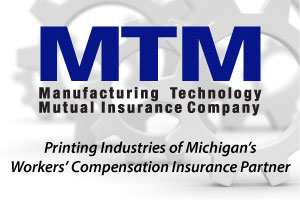
Recently, many of my clients have been asking me this question? I believe there are many reasons why they are asking. Here’s why I think they are concerned:
- The owner or one of the partners is aging and they want to or need to retire.
- The business has seen increases in sales and profits the past year or two which reversed the trends during the recession.
- The fear that one or more of their top clients may leave due to price or go to someone with more capabilities.
- The fear of losing a key employee.
- The equipment is getting old and they need to upgrade. Many are afraid to make a long term financial commitment under the premise they will have more debt when they want to sell.
- The need to change their business model as customer demands change – making wrong choices could jeopardize their business so they would like to merge or sell to someone who they perceive has a rosier future.
- Their workforce is aging. Work has shifted from offset to digital which means in some cases that pressmen are unable to have enough work for 40 hours per week.
- Finding new profitable clients seems harder and harder and the risk of hiring new sales people who may fail is not an attractive option.
- The perception that there is more of a demand and values may be rising as more and more printers are buying competitors as a strategy to grow.
If you can identify with any or all of the above comments, then you may want to find out how much your business is worth. Most agree that the overall business environment is better albeit no one knows how much longer it will last.
Now may be an ideal time to market your business. Buyers are looking for businesses with good clients and trained employees. Some buyers are not looking for another facility and want to tuck your business into theirs. In some instances a buyer may want to move their business into your plant or add volume to your shop and keep the location.
Buyers are also not looking for equipment unless you have new equipment or equipment that the buyer does not have. Sellers that have mailing, wide format, signage or packaging equipment are the most desired. So how much is your business worth? Here’s a guide for a few of the most common scenarios.
- A tuck-in – the largest value in a tuck-in is in the client base.
Buyers are willing to pay for retained sales. They may offer some cash up front and likely to pay royalties or commissions for 2 to 5 years. Royalties can vary from 5% to 15% depending on cash paid up front, the number of payout years and the margin that the buyer will get from the acquired clients. Buyers will buy selected equipment. The seller will have to sell the rest either in an auction or advertise on-line. A good deal is where the seller and buyer share the risk of the retention of clients. Typically the buyer will guarantee some of the deal by paying cash, sign a note with the balance of the purchase price to be paid out based on retained sales. - A merger – a true merger of two businesses can be an exit strategy for one of the parties or simply a method to consolidate the sales into one location. The overall profits go up with the reduction in expenses of operating two facilities. A larger merged company may be able offer more services to each company’s clients. The value will be based on a combination of the profits and sales that each party contributes to the merged company. A good merger should instantly create a combined company that has more value than each company would have as a standalone. The best merger candidates are companies that complement each other. We have seen many commercial printers merge with digital printers. Printers are also buying mailing companies or sign companies. Good mergers are ones that keep all or most of the equipment from both companies otherwise all redundant or older equipment will have to be sold.







